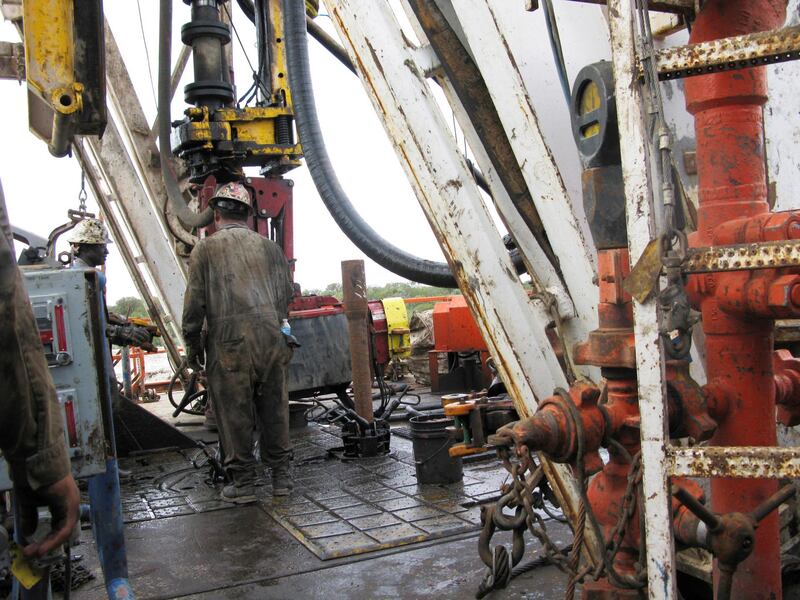Chinese tariffs on US crude are likely to have a limited impact on flows to the country, which is likely to switch to West African grades to keep its refineries running.
On Friday, China, the world’s biggest importer of oil, slapped 10 and 5 per cent tariffs effective in two tranches from September 1 and December 15 on a range of goods from the US such as soy, cars, pork, chicken, beef and crude oil. Crude from the US, which had not yet been dragged into the tariff war, will now be taxed at 5 per cent from September 1.
The move is a symbolic blow to the US, currently the world’s biggest producer of oil, and with ambitions to gain greater market share in Asia, notably in China, the biggest driver of demand growth globally.
"The move to add US crude on the tariff list is more symbolic, considering that China imported around 360,000 barrels per day (bpd) of US crude in July and Chinese US crude imports were already at zero in January and March of this year,” said Giovanni Staunovo, commodity analyst at UBS.
“In a world producing and consuming more than 100 million bpd those amounts are small,” he added.
China, which is also the world’s biggest buyer of liquefied natural gas, has a 10 per cent duty on imports of the super-chilled fuel from the US, which has been in place for nearly a year.
The latest set of Chinese tariffs prompted further escalation from the US, which hiked its taxes on imports by 5 per cent and has caused concern within the US energy industry. The American Petroleum Institute urged Washington to “quickly come to a trade agreement” with Beijing that would avoid damaging retaliatory tariffs on “American energy exports”.
In particular, China’s Sinopec, which is the largest refiner in Asia, is concerned, with Reuters citing sources saying the company is looking to secure waivers to continue importing US crude exempt from tariffs.
Also on the line are four super-tankers carrying 8 million barrels of US crude between September and October.
Anas Al Hajji, a Dallas-based independent energy expert, said the cargoes carried by the tankers are unlikely to be be subject to tariffs, especially if they left for China before the taxes became effective.
"The increase in Chinese tariffs on oil imports from the US is small and manageable,” he said, adding that Beijing could use its tariffs on American oil and condensate as a “bargaining chip” in trade negotiations.
Chinese refineries ran at a total capacity of 12.4 million bpd in 2018, accounting for 15 per cent of global capacity - second only to the US.
Its so-called “teapot” refineries, which refer to plants that are independently run and have relatively smaller capacities, have driven up demand. China’s current refining capacity is 5 per cent higher than 2018.
Chinese refiners are well diversified in sourcing crude blends and can easily opt for West African sources, which have similar properties of to American grades.
"US crude imports into China have declined this year. I would not expect any impact on crude prices just because of the tariff, but rather a reshuffle in the trade flows,” said Sushant Gupta, Wood Mackenzie's director for Asia-Pacific refining.
He also expects limited impact on refining margins, as West African crude is widely available in Asia.
"US crude exports to China have not reached to a level that can’t find a home outside China,” said Mr Gupta.
Purchases of US crude across Asia, meanwhile, have increased. Demand grew more than five-fold in Asia Pacific year-to-date in May. South Korea is the biggest buyer of US oil in Asia, with India, Taiwan and Thailand all outpacing Chinese demand for American crude.
"APAC imported nearly 1.4 million bpd of US crude in May (latest available month with data). In May 2017 US crude imports were just 250,000 bpd," observed Mr Staunovo.
"That said, depending on the flexibility of the refineries there might be a limit to increase massively further US crude purchases," he added.
Iran's bonded storage in China could also be an option to meet shortfalls, but Beijing may not choose to risk procuring more Iranian crude to avoid upsetting the US.
But with China's reliance on US crude imports at 0.4 per cent, any impact of tariffs would be at best "muted", said Mr Staunovo.








